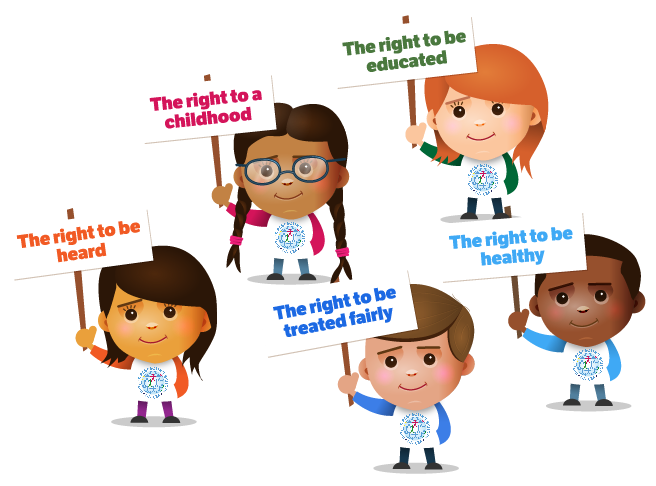Children’s rights are a subset of human rights with particular attention to the rights of special protection and care afforded to minors. The 1989 Convention on the Rights of the Child (CRC) defines a child as “any human being below the age of eighteen years, unless under the law applicable to the child, majority is attained earlier.” Children’s rights includes their right to association with both parents, human identity as well as the basic needs for physical protection, food, universal state-paid education, health care, and criminal laws appropriate for the age and development of the child, equal protection of the child’s civil rights, and freedom from discrimination on the basis of the child’s race, gender, sexual orientation, gender identity, national origin, religion, disability, color, ethnicity, or other characteristics. Interpretations of children’s rights range from allowing children the capacity for autonomous action to the enforcement of children being physically, mentally and emotionally free from abuse, though what constitutes “abuse” is a matter of debate. Other definitions include the rights to care and nurturing. There are no definitions of other terms used to describe young people such as “adolescents”, “teenagers”, or “youth” in international law, but the children’s rights movement is considered distinct from the youth rights movement. The field of children’s rights spans the fields of law, politics, religion, and morality.
There is a mass of human rights law, treaty and ‘soft law’, both general and child-specific, which recognizes the distinct status and particular requirements of children. Children, owing to their particular vulnerability and their significance as the future generation, are entitled to special treatment generally, and, in situations of danger, to priority in the receipt of assistance and protection.
As minors by law, children do not have autonomy or the right to make decisions on their own for themselves in any known jurisdiction of the world. Instead their adult caregivers, including parents, social workers, teachers, youth workers, and others, are vested with that authority, depending on the circumstances. Some believe that this state of affairs gives children insufficient control over their own lives and causes them to be vulnerable. Louis Althusser has gone so far as to describe this legal machinery, as it applies to children, as “repressive state apparatuses”.
Structures such as government policy have been held by some commentators to mask the ways adults’ abuse and exploit children, resulting in child poverty, lack of educational opportunities, and child labour. On this view, children are to be regarded as a minority group towards whom society needs to reconsider the way it behaves.
Children have two types of human rights under international human rights law. They have the same fundamental general human rights as adults, although some human rights, such as the right to marry, are dormant until they are of age, Secondly, they have special human rights that are necessary to protect them during their minority. General rights operative in childhood include the right to security of the person, to freedom from inhuman, cruel, or degrading treatment, and the right to special protection during childhood. Particular human rights of children include, among other rights, the right to life, the right to a name, the right to express his views in matters concerning the child, the right to freedom of thought, conscience and religion, the right to health care, the right to protection from economic and sexual exploitation, and the right to education.
Children’s rights are defined in numerous ways, including a wide spectrum of civil, political, economic, social and cultural rights. Rights tend to be of two general types: those advocating for children as autonomous persons under the law and those placing a claim on society for protection from harms perpetrated on children because of their dependency. These have been labeled as the right of empowerment and as the right to protection.
United Nations educational guides for children classify the rights outlined in the Convention on the Rights of the Child as the “3 Ps”: Provision, Protection, and Participation. They may be elaborated as follows:
- Provision: Children have the right to an adequate standard of living, health care, education and services, and to play and recreation. These include a balanced diet, a warm bed to sleep in, and access to schooling.
- Protection: Children have the right to protection from abuse, neglect, exploitation and discrimination. This includes the right to safe places for children to play; constructive child rearing behavior, and acknowledgment of the evolving capacities of children.
- Participation: Children have the right to participate in communities and have programs and services for themselves. This includes children’s involvement in libraries and community programs, youth voice activities, and involving children as decision-makers.

